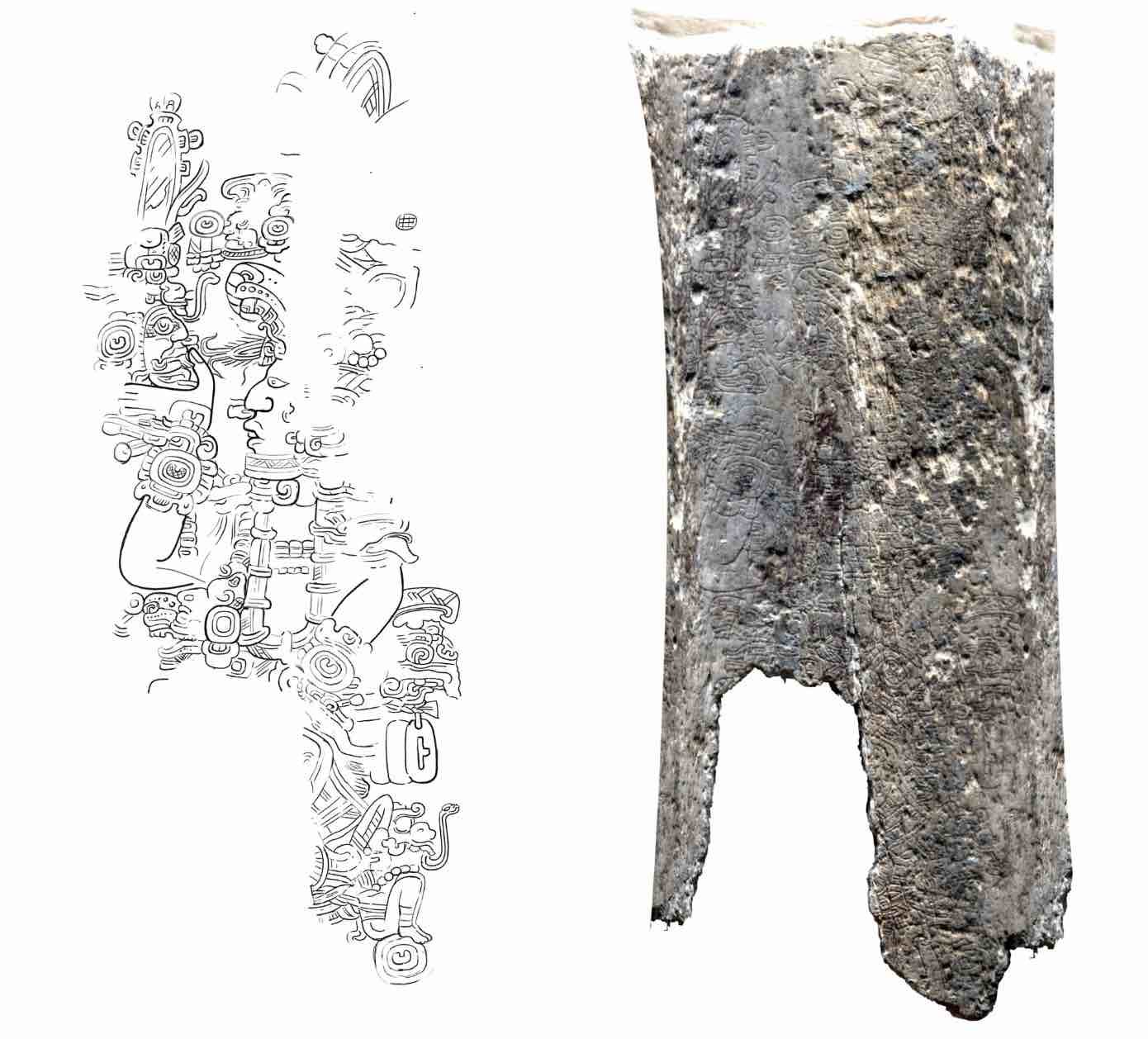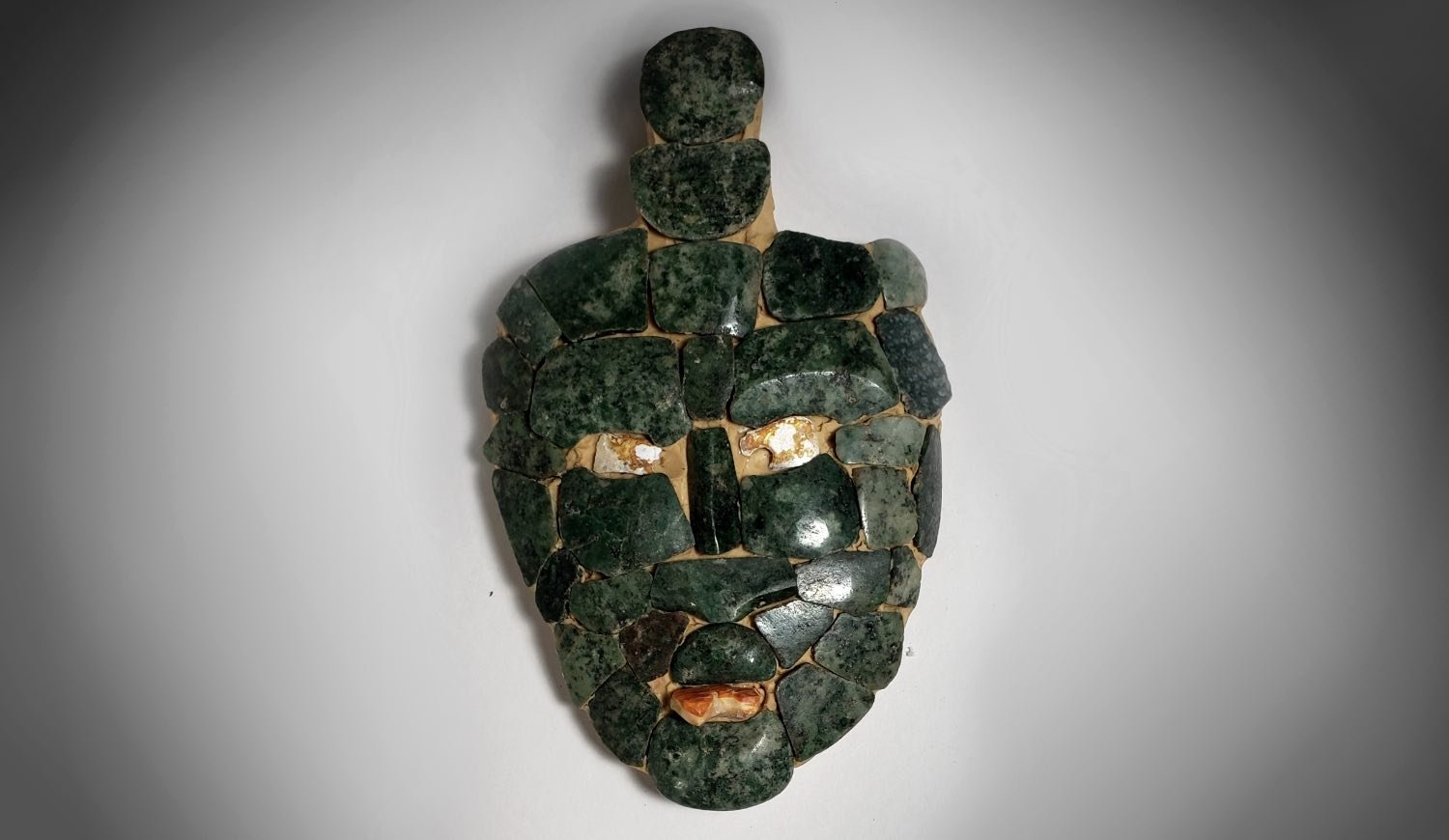Artifacts unearthed in a 1,700-year-old Maya tomb in Guatemala, which include a jade mask and incised human remains, could point to an undocumented chapter in the history of the Maya Empire according to researchers involved with the discovery.
The tomb was discovered by researchers with Tulane University at the Chochkitam site, located near Guatemala’s borders with Belize and Mexico.
Among the remarkable discoveries at the site were a curious jade mosaic mask, as well as carved human femur bones, one of which appears to convey a man believed to be a Maya king holding such a mask.


According to researchers, hieroglyphs that accompany the carvings are believed to identify his ancestors and describe the lineage of rulers extending to the Maya states of Tikal and Teotihuacan.
Other findings within the tomb included 16 rare spondylus shells, a variety of oysters whose shell was revered by the Maya, and often worn as jewelry or used as currency, in addition to having been used in ceremonies.
The artifacts, which are believed to date to 350 CE, offer additional links to Tikal and Teotihuacan, which were highly influential on Maya rulers during this period.


Francisco Estrada-Belli, a research assistant professor at the Tulane University School of Liberal Arts and the archaeologist who discovered the tomb in 2022, likened the findings to winning the lottery due to the unprecedented information the tomb revealed. Since its discovery, an ongoing effort to document, analyze, and interpret the site and its artifacts has remained underway.
“It opens a window into an obscure time we have very little texts about,” Estrada-Belli said in a statement. Previous discoveries from the same period have often suffered looting in the past, which has greatly reduced the information accessible to archaeologists about the Maya classic period, which occurred between around 250 and 900 AD.
Miraculously, the discoveries at the Chochkitam site were made within just six feet of where looters had stopped digging, allowing the unique preservation of a ceremonial grave of historic importance. Although the ceiling of the stone tomb had collapsed, there had been little damage to its contents otherwise.
Ironically, part of what led researchers to the site had been tunnels the looters used to reach the site, which was initially detected using LIDAR mapping of the region, a technique that Estrada-Belli says has revolutionized his field of study.
“It’s like taking x-rays of the jungle floor,” Estrada-Belli said. In recent similar discoveries, LIDAR technology was used to reveal a vast complex of previously undiscovered ancient structures and roads in the Upano Valley of Amazonian Ecuador, which seemingly represents an extremely advanced society among early Maya settlements in Mesoamerica.


Archaeological Project. (Courtesy Tulane University).
“[N]ow can we see where we’re going instead of just bushwhacking through the jungle hoping to find something,” Estrada-Belli added.
Although the discoveries were made possible partly due to modern technologies like LIDAR, the new findings build on a century of research at the site by Tulane researchers. In 1924, Fran Blom with the university’s Middle American Research Institute (MARI) led the earliest formal explorations at the site, although no excavations occurred at that time.
The discovery comes 100 years after Fran Blom, an early director of Tulane’s famed Middle American Research Institute (MARI), first explored the site. The Chochkitam ruins were first investigated in 1924, but no formal excavation — only looting — had taken place until Estrada-Belli’s team began work in 2019. They discovered the tomb during fieldwork in 2022.
Marcello A. Canuto, the director of MARI and an archaeologist at Tulane specializing in Maya archaeology, said that although excavations wouldn’t begin until 2019, the university had long recognized the site’s significance.
“Discoveries like this one and others, including those made by other Tulane faculty and students also conducting fieldwork, represent Tulane’s commitment to studying ancient indigenous American peoples and their accomplishments,” Canuto said.
Going forward, Estrada-Belli hopes to continue work at the site, which will include testing the human bones recovered within the tomb to find whether DNA can be used to glean additional insights into this period in Maya history that remains mysterious to archaeologists.
Micah Hanks is the Editor-in-Chief and Co-Founder of The Debrief. He can be reached by email at micah@thedebrief.org. Follow his work at micahhanks.com and on X: @MicahHanks.

